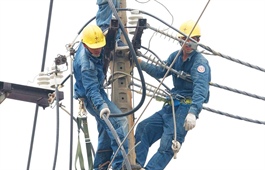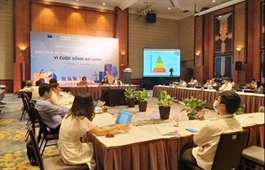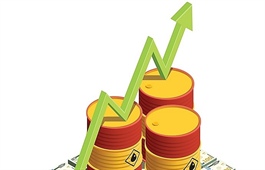VN needs to improve post-harvest technologies for farm exports to be competitive: Experts
VN needs to improve post-harvest technologies for farm exports to be competitive: Experts
Viet Nam needs to invest more in post-harvesting technologies to improve the competitiveness of its farm produce, including fruits and vegetables, in the global market, experts have said.

Poor harvesting and preservation technologies result in a decline in their value, and with the growing competition, the country needs to invest heavily in processing of fruits and other farm produce to hold its own in export markets.
According to Ho Thi Thu Hoa, head of the Viet Nam Logistics Research and Development Institute, only 0.3 per cent of agricultural products in Viet Nam benefit from the use of cold chain logistics technologies compared to 3 per cent in Germany, 2.6 per cent in England and 1 per cent in the US.
Post-harvest losses in Viet Nam are significant at around 25 per cent farm since the country has little in the way of post-harvest technologies and machinery.
According to the Food and Agriculture Organisation of the United Nations, Viet Nam loses 10 per cent of its rice output, 10-20 per cent of root and tuber crops and 10-30 per cent of fruits and vegetables.
In the Mekong Delta, a major rice bowl, post-harvest rice losses are worth more than VND3 trillion (US$132 million) a year, or 10-12 per cent of total output.
"Packaging farm products plays a very important role in preserving them after harvest, but Vietnamese businesses are not paying attention to that," Hoa said.
Some 70 per cent of fruit and vegetable exports have been to China, mostly in fresh and unprocessed form.
Little went to South Korea, Japan, the US, or the EU because of Viet Nam’s limitations with regard to storage and post-harvest processing, experts said.
The country’s seafood faces similar issues, particularly with ocean tuna. Japan is a big market for this fish and willing to pay high prices for it. A number of Japanese experts have attempted to assist Vietnamese fishermen in post-harvest processing, but there has been little progress so far.
Le Duy Hiep, chairman of the Viet Nam Logistics Business Association (VLA), said to reduce post-harvest losses it was necessary to make further investments in agriculture, the Government needed to offer incentives to encourage farmers apply high-technology to reduce losses after harvest.
Nguyen Thi Thanh Thuc, chairwoman and director of Bagico Company, said to preserve produce, factors that affect quality must be tackled directly such as vegetables being desiccated before packing.
The country exports its agricultural products to 120 countries and territories, with key products being rice, coffee, pepper, and seafood.
However, in large and fastidious markets like the EU, the US, Japan, and Australia, many of its exports have been refused entry due to microbial infections and residues of veterinary drugs and heavy metals.


















